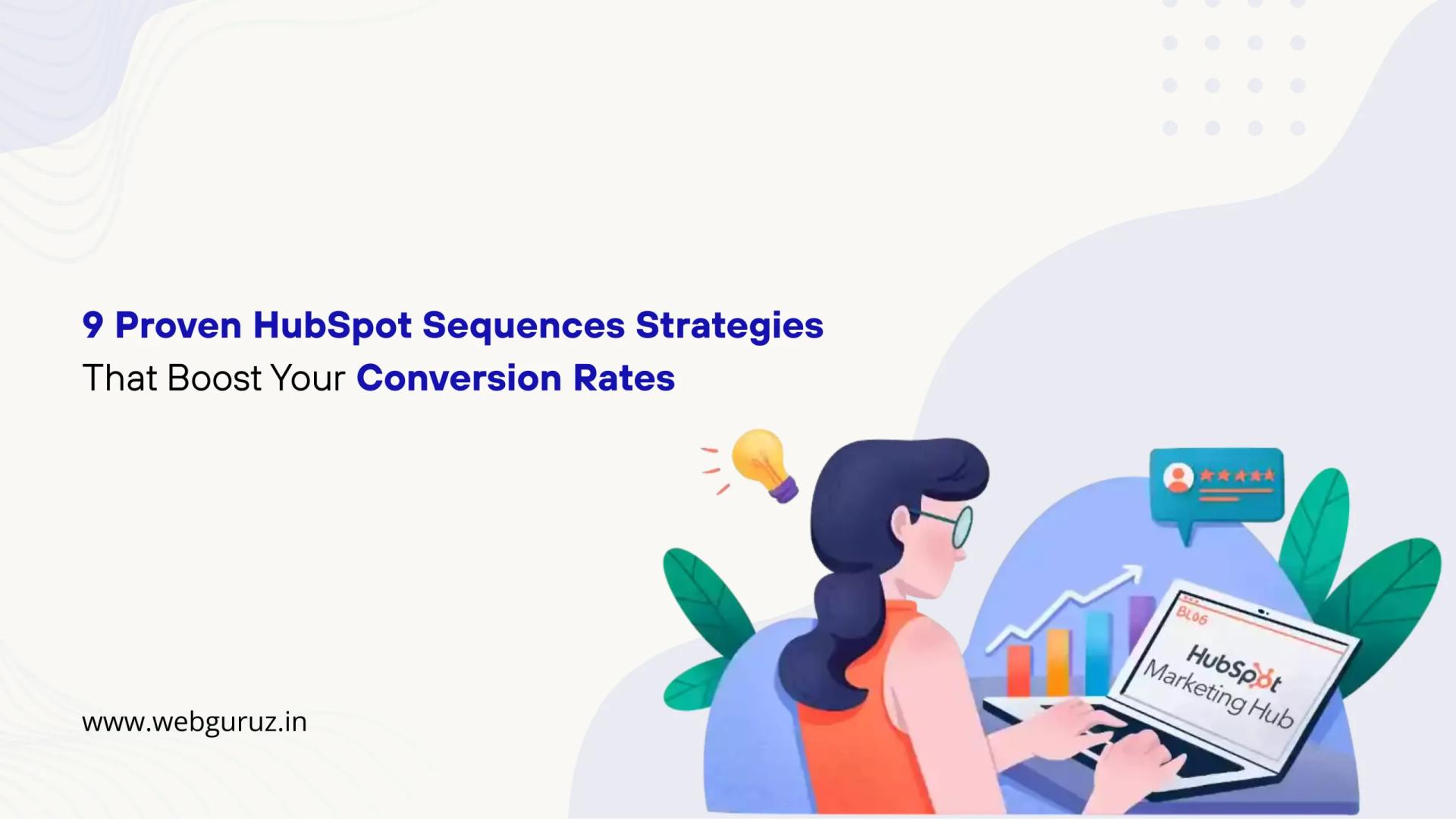Dilpreet Kaur
2025-12-25
7 min read
Top eCommerce Development Companies in the USA for 2026
Finding the right partner can make or break your online business.
Read More
However, a website alone isn’t enough. In addition to Hubspot CMS, you also need a robust customer relationship management (CRM) system to nurture leads, track customer interactions, and drive sales. That’s where HubSpot CRM comes in. By integrating HubSpot CRM with your custom website, you can create a powerful marketing and sales engine that helps you attract, engage, and convert more customers. CRMs are highly recognized for helping businesses understand more about their target audience and also help in increasing sales. According to edgecrm.app, these systems have the tendency to elevate the conversion rates of businesses by about 300%, which in itself is a huge number. But how do you achieve this? Hubspot CRM Development Services might have the answer you are looking for.
Integrating HubSpot CRM with your website offers numerous advantages that can significantly impact your business’s growth. Here are some key benefits:
Hubspot CRM Development Services allow you to integrate your website’s contact forms with HubSpot CRM. This allows you to capture lead information automatically, streamlining the lead generation process. By assigning scores to leads based on their behavior and engagement, you can prioritize your efforts and focus on the most promising prospects. Additionally, using HubSpot’s email marketing tools to nurture leads with personalized campaigns can increase the likelihood of conversion, ultimately driving more sales.
Read More: Which CMS is Best? WordPress CMS vs HubSpot
Displaying personalized content on your website based on individual visitor preferences and behavior creates a more engaging and relevant experience. Segmenting your audience based on their interactions with your site allows you to tailor your marketing messages to specific groups, increasing their effectiveness. A/B testing different website elements and marketing messages helps you identify what resonates best with your audience, enabling you to optimize your website for conversions.
Having all customer information readily accessible in one place eliminates the need to switch between multiple systems, saving your sales team time and improving productivity. Visualizing your sales pipeline and tracking the progress of deals helps you identify potential bottlenecks and ensure that deals are moving forward efficiently. Automating repetitive tasks frees up your sales team to focus on building relationships and closing deals, ultimately increasing sales efficiency.
Tracking key website metrics like traffic, bounce rate, and time on the page provides valuable insights into how visitors are interacting with your site. Monitoring conversion rates for different goals helps you measure the effectiveness of your marketing efforts. Analyzing the performance of your marketing campaigns, including email open rates, click-through rates, and ROI, enables you to make data-driven decisions to optimize your strategies. A CMS development company can help you gain insights into customer behavior and preferences, so you can tailor your marketing and sales efforts to better meet their needs.
By leveraging these benefits, integrating HubSpot CRM with your website can significantly improve your lead generation, marketing effectiveness, sales efficiency, and overall business growth.
Now that you understand the benefits, let’s delve into the steps involved in integrating HubSpot CRM with your custom website.
Before diving into the integration process, it’s essential to prepare your website. Here are some key steps:
You may need to provide login credentials or API keys for your website and hosting platform.
If you encounter any issues during the integration process, refer to HubSpot’s documentation or contact their support team for assistance. Common issues may include:
By following these steps and troubleshooting any issues, you can successfully integrate your website with HubSpot CRM and start leveraging its powerful features.
Once integrated, HubSpot CRM can be used to:
Create Personalized Marketing Campaigns
To effectively personalize your marketing campaigns, start by dividing your audience into distinct segments based on relevant criteria such as demographics, interests, behavior, or preferences. Once you’ve segmented your audience, create content that directly addresses the needs and interests of each group. This can include personalized product recommendations, targeted offers, or relevant blog posts.
Track and Nurture Leads
To effectively track and nurture leads, monitor their interactions with your website, including page views, form submissions, and content downloads. Use lead scoring to assign scores to leads based on their behavior and engagement, allowing you to prioritize your sales efforts on the most promising prospects. You can create automated lead nurturing workflows to send personalized emails, provide relevant content, and guide leads towards conversion. Utilize lead scoring to identify and prioritize high-quality leads for further nurturing.
Recommended Read: Boosting CRM Effectiveness: Easy Hubspot Tweaks For New Business Owners
Identify specific actions or behaviors that will trigger automated responses. This can include website visits, form submissions, email clicks, or purchases. Set thresholds for behaviors to trigger automated actions, such as visiting a certain number of pages or spending a specific amount of time on your site.
Once you’ve defined your triggers, create automated responses that align with your lead nurturing goals. This can include personalized emails, content offers, or adjustments to lead scores.Use automated emails to welcome new subscribers, remind abandoned cart customers of their items, or provide post-purchase follow-ups. Offer relevant content or resources to leads based on their behavior, such as whitepapers, webinars, or demos. Adjust lead scores based on their behavior to prioritize leads for sales follow-up.
To measure the effectiveness of your integration, track key metrics like website traffic, conversion rates, and lead engagement. Use HubSpot’s analytics tools and other platforms to gain insights into your marketing performance.
Integrating HubSpot CRM with your custom website is a powerful way to enhance your marketing efforts, generate more leads, and improve customer satisfaction. By following these steps and leveraging the capabilities of Hubspot CRM, you can create a more effective and efficient online presence.
Finally, leveraging the expertise of an experienced cms development company like WebGuruz, you can effectively integrate your custom website to Hubspot CRM. You can further leverage their knowledge and experience in Drupal Web Development Services and WordPress Website Development as well.

Dilpreet Kaur
2025-12-25
7 min read
Finding the right partner can make or break your online business.
Read More
Dilpreet Kaur
2025-12-25
7 min read
Sending emails and hoping for the best isn’t a strategy.
Read More
Dilpreet Kaur
2025-12-25
7 min read
Finding the right digital marketing agency can feel overwhelming. With thousands of options out there, how do you know which one will actually help your business grow?
Read More